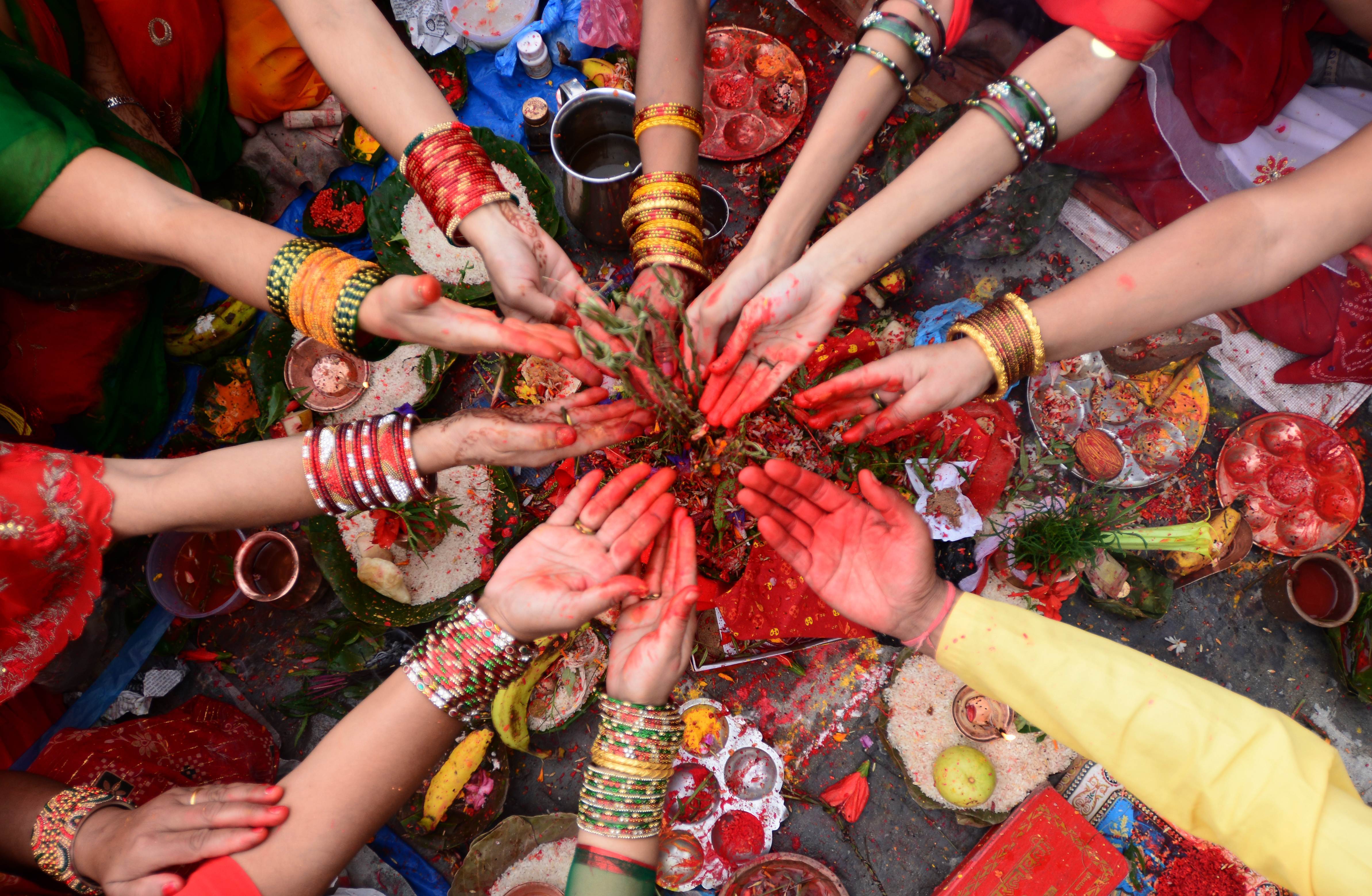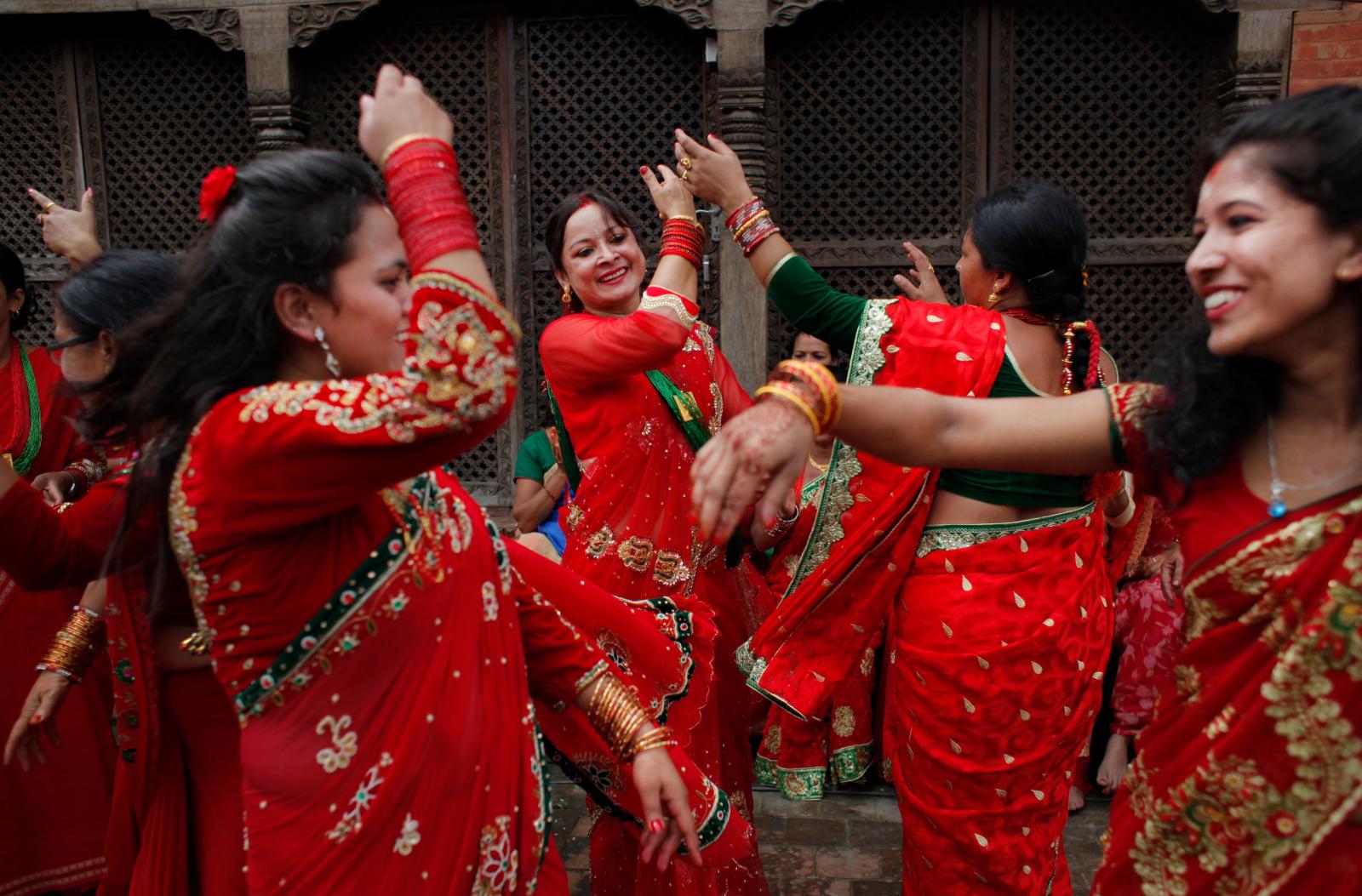Teej Festival in Nepal: A Joyous Celebration of Love, Tradition, and Sisterhood
Teej, also known as Haritalika Teej, is a sacred and joyous festival celebrated by Nepali Hindu women with immense enthusiasm and hope. Dedicated to Lord Shiva and Goddess Parvati, Teej spans three days.

The history of Teej finds its roots in Hindu mythology, which narrates the story of Sati, the daughter of King Daksha, who fell in love with Lord Shiva. Despite her love, her father disapproved of their union, leading to a tragic end for Sati. She reincarnated as Parvati and, with her unwavering devotion and fasting, won Lord Shiva's heart and hand in marriage. Teej is celebrated to commemorate this divine union and is considered a time to seek the blessings of Lord Shiva and Parvati for the well-being and longevity of husbands. The festival takes place during the Nepali month of Bhadra (August-September), coinciding with the monsoon season, making it a time of refreshing rains and lush landscapes. The iconic Pashupatinath temple becomes a focal point for devotees, drawing a massive crowd of worshippers who offer their prayers to Lord Shiva and seek divine blessings during this auspicious period.
The significance of color red plays a prominent role in Teej celebrations. Red holds immense cultural and traditional importance for married women in Nepal. It symbolizes luck and prosperity, and a married woman often adorns herself with red attire and accessories. During Teej, women dress in vibrant red saris and embellish themselves with gold and silver jewelry, creating a festive atmosphere reminiscent of a bride. Applying Mehendi (henna) on their hands adds to the allure and joy of the occasion. Women, both married and unmarried, participate in the festivities, each with their unique prayers and wishes. Married women fast to seek blessings for their husbands' long and prosperous lives, while unmarried women fast with the hope of finding a partner who embodies the qualities of Lord Shiva - someone who cherishes their spouse's happiness above all else. The celebration of Teej goes beyond religious rituals; it is an opportunity for women to bond and showcase their cultural heritage. They come together with family, friends, and neighbors to share feasts, laughter, and love. The festival fosters a strong sense of sisterhood as women exchange gifts and offer support to one another.

The three main days of Teej celebrations are the feast day, the fast day, and Rishi Panchami. On the feast day, women gather to enjoy sumptuous meals and indulge in singing and dancing, creating a vibrant atmosphere of joy and camaraderie. The fast day is marked by devoted fasting and prayers to Lord Shiva and Goddess Parvati, and women eagerly await the opportunity to break their fast in the evening with the first morsel of food and a sip of water offered by their husbands. Rishi Panchami is observed as a day of purification when women cleanse themselves of their past sins and offer their respects to the seven sages. Teej is an integral part of Nepali culture and is celebrated with such fervor that it is declared a public holiday. This allows women to fully embrace the spirit of the festival and immerse themselves in its traditions without any hindrance. For tourists and visitors to Nepal, experiencing the Teej Festival can be a transformative cultural experience. Witnessing the radiant beauty of women dressed in red, the mesmerizing folk dances, and the heartwarming rituals strengthens the connection to the rich cultural heritage of Nepal.
Hence, Teej Festival in Nepal is a celebration of love, tradition, and sisterhood. Women fast and pray to Lord Shiva and Goddess Parvati, seeking blessings for their husband's well-being and prosperous married life. The festival's vibrant colors, melodious songs, and joyful gatherings embody the essence of Nepali culture and its reverence for relationships. Teej is not just a religious event; it is a powerful celebration of femininity, unity, and devotion that unites women from all walks of life. Participating in Teej offers an enchanting glimpse into the rich tapestry of Nepali customs and beliefs, making it an unforgettable experience for both locals and visitors alike.


